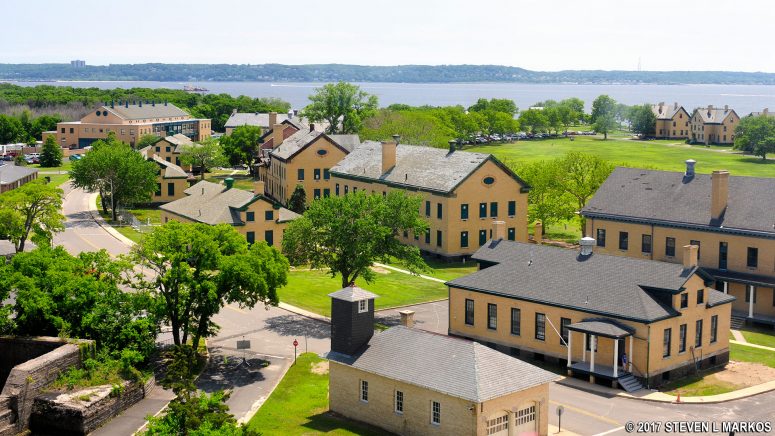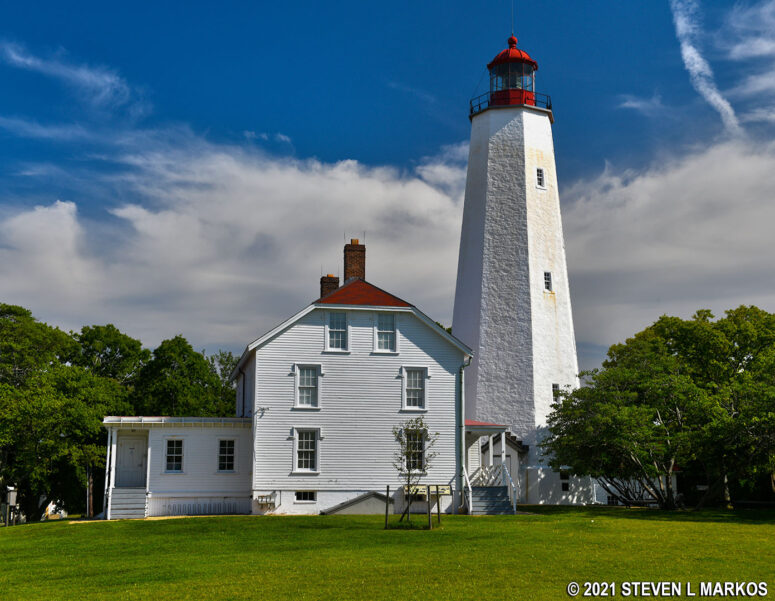LIGHTHOUSE TOURS
The Sandy Hook Lighthouse at Gateway National Recreation Area is typically open for guided tours from April through October on various days, though there is no set schedule and tours are subject to staff availability. The only way to know when tours are being held is to call the park at (732) 872-5970.
Due to the tight space inside the lighthouse tower, each tour group is limited to eight people. All spots are taken on a first come, first served basis, and you must sign up on the day of the tour at the adjacent Light Keeper’s Quarters building, which also serves as the Sandy Hook Visitor Center. Sign-ups typically start a half hour before the tours begin. Tours do fill up, so arrive early. There is no fee, and the only restriction is that children must be at least 48” tall to take the tour.
If you have a large group of up to 35 people, you must make a reservation to climb the lighthouse at least three weeks in advance. Contact the park by going to the Sandy Hook web page and clicking the Email Us link located under the heading Operating Hours.
When you get to the top of the lighthouse you’ll know why only eight people are allowed up at a time. When looking at the top of the lighthouse from outside you will see a railing and walkway around the light. Well, you won’t be going out on that walkway, which looks rather roomy. Instead, you will be stuck inside the lens house, the small glass cupola where the actual lens of the lighthouse is mounted. Inside, there’s not enough room to even squeeze past another person.
A Ranger gives a short talk on the history of the Sandy Hook Lighthouse before starting up the steps. There are 95 of them, and once at the top you must climb a 9-rung ladder to get to the lens house. Feel free to ask questions and take photos. You will be photographing through the glass, but you do get a great view of Fort Hancock.
I have been in many lighthouses, but this was the first one where I could see the actual Fresnel Lens up close. However, I was so close to it that it was impossible to a take photo. The space between the lens and the glass of the lens house is about the width of two bodies.
LIGHTHOUSE HISTORY
To enter Sandy Hook Bay, ships had to sail around the point of Sandy Hook where numerous sand bars and hidden shoals existed. After multiple shipwrecks had occurred, a group of New York merchants petitioned the Colonial Assembly of New York to build a lighthouse. Land at the tip of the peninsula was purchased, and the New York Light House became operational on June 11, 1764. When built, it was only 500 feet from the tip of Sandy Hook. Because sand has shifted over the years, it is now 1.5 miles from the tip. Regardless, it can still be seen 19 miles out at sea.
Money for upkeep and pay for the lightkeeper was derived from a tax on incoming cargo. Up until the lighthouse was automated in 1938, lightkeepers where hired to keep the light burning. Part of their pay included housing. The current lightkeeper’s house was built in 1883 and now serves as the Sandy Hook Visitor Center and Lighthouse Museum.
In 1857 the lighthouse was outfitted with a Fresnel Lens. Augustin Fresnel had invented a revolutionary new lens system in 1822 and had six different sizes, or orders. A third order lens was installed in the Sandy Hook Lighthouse. Other innovations over the years include the replacement of whale oil as a fuel with kerosene in the late 1870s, and then switching to electric light in the 1930s. Today the lighthouse still operates and is fully automated. It is the oldest lighthouse in the United States that is still in use.
The Sandy Hook Lighthouse was transferred to the National Park Service in 1995, though the U. S. Coast Guard is still responsible for its operation and maintenance. While ships now use modern technology to navigate, lighthouses around the country are still in use, though mainly for historical and tourism purposes.
The Sandy Hook Lighthouse is the first stop on the Fort Hancock Walking Tour. If taking the tour, the next stop is Fire House No. 2.
With a few exceptions, use of any photograph on the National Park Planner website requires a paid Royalty Free Editorial Use License or Commercial Use License. See the Photo Usage page for details.
Last updated on January 1, 2025





